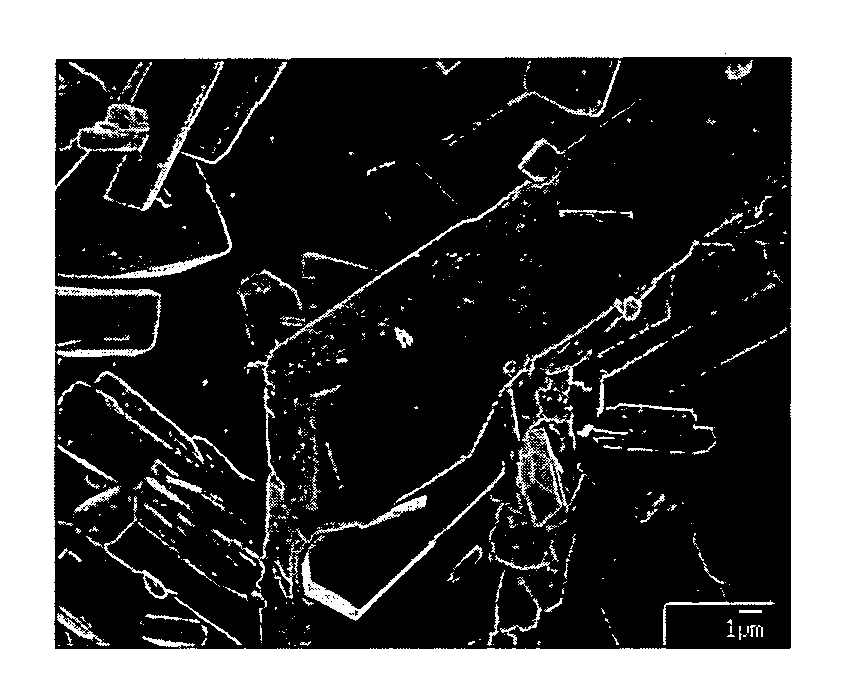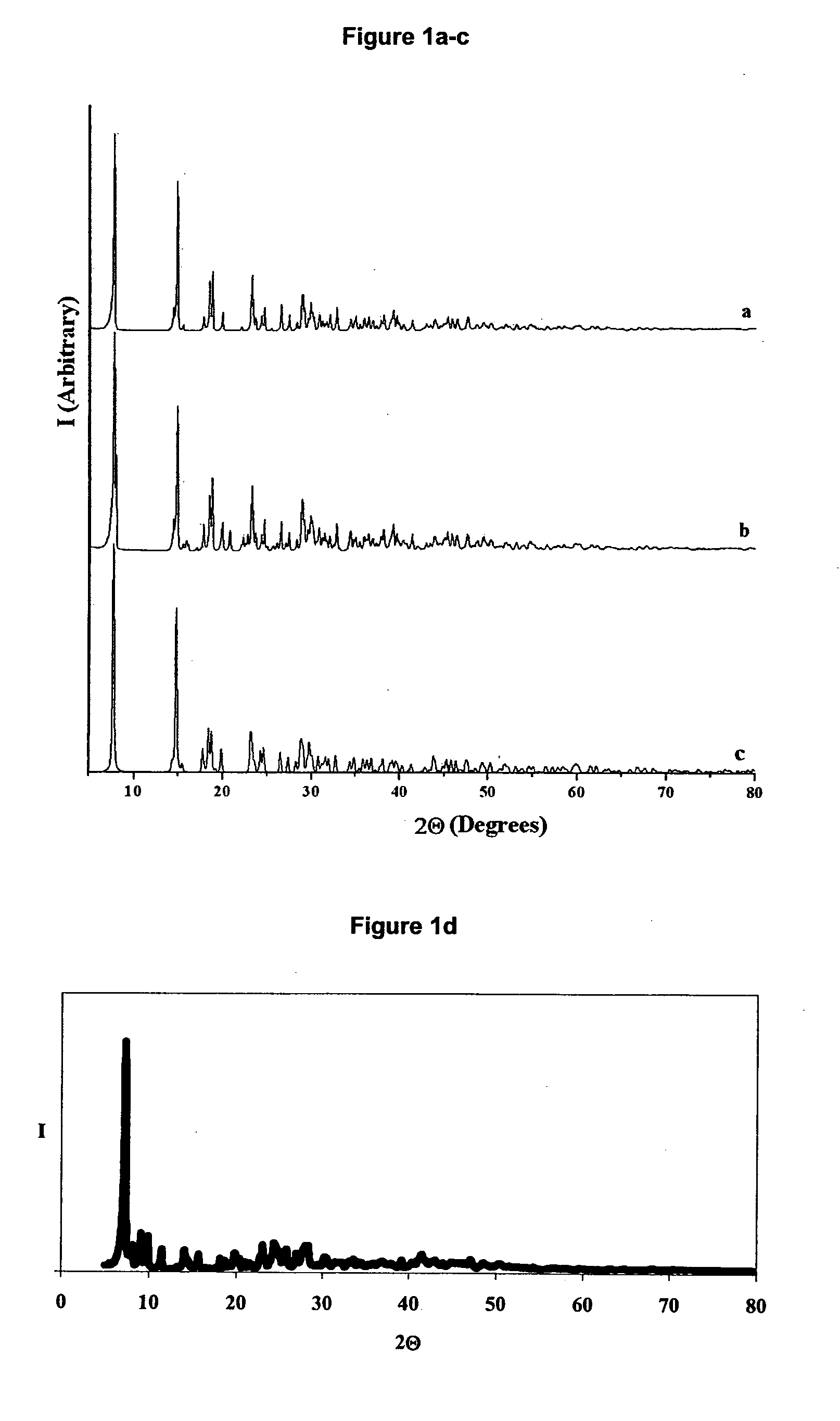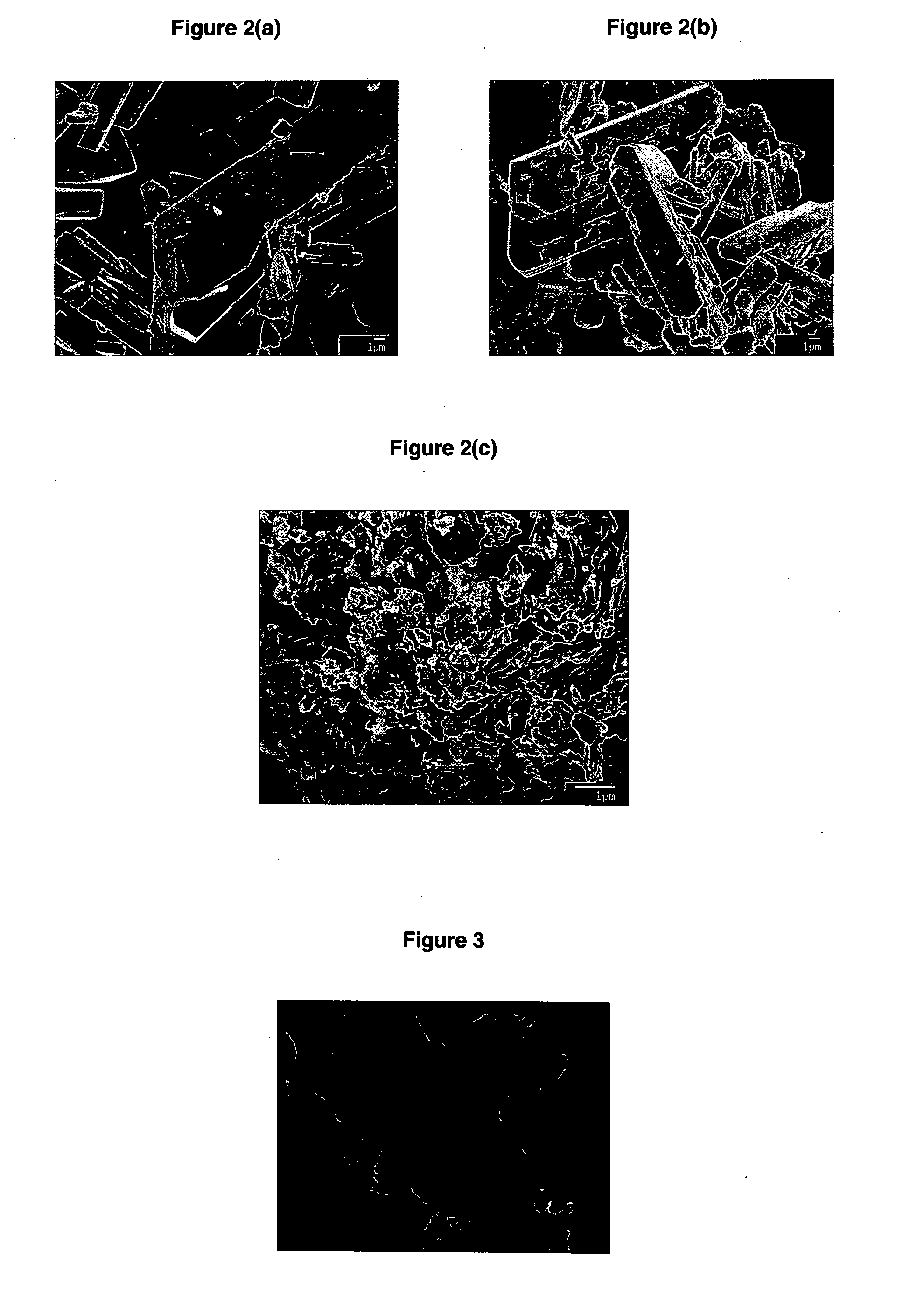Lead recycling
a technology of lead bearing fumes and recycling, which is applied in the direction of inorganic chemistry, dissolving, tin compounds, etc., can solve the problems of high temperature processes that generate significant amounts of hazardous lead bearing fumes, dust and slag, and high cost of controlling harmful emissions
- Summary
- Abstract
- Description
- Claims
- Application Information
AI Technical Summary
Benefits of technology
Problems solved by technology
Method used
Image
Examples
examples
Lead Citrate Synthesis
[0096]The reaction conditions suitable for the synthesis and recovery of lead citrate were investigated. Preliminary experiments were conducted using lead compounds available from commercial suppliers as a model for scrap battery paste.
[0097]Analytically pure commercially available lead oxide (PbO, Acros Organics), lead dioxide (PbO2, Fisher Scientific), lead sulphate (PbSO4, Fisher Scientific), citric acid monohydrate (C6H8O7.H2O, Acros Organics), and, where appropriate, 27.5% hydrogen peroxide (H2O2) solution in water (Aldrich) and tri-sodium citrate (Na3C6H5O7.2H2O, Fisher Scientific), were used as starting materials.
[0098]The reactions were performed in a beaker equipped with a magnetic stirrer bar mounted on a magnetic stirrer hotplate. In each experiment the total volume of the aqueous citric acid solution was 30 mL. The reaction mixtures were stirred at a constant rate of 250 rpm, unless stated otherwise. The temperature of the reaction was monitored and...
PUM
| Property | Measurement | Unit |
|---|---|---|
| Temperature | aaaaa | aaaaa |
| Temperature | aaaaa | aaaaa |
| Partial pressure | aaaaa | aaaaa |
Abstract
Description
Claims
Application Information
 Login to View More
Login to View More - R&D
- Intellectual Property
- Life Sciences
- Materials
- Tech Scout
- Unparalleled Data Quality
- Higher Quality Content
- 60% Fewer Hallucinations
Browse by: Latest US Patents, China's latest patents, Technical Efficacy Thesaurus, Application Domain, Technology Topic, Popular Technical Reports.
© 2025 PatSnap. All rights reserved.Legal|Privacy policy|Modern Slavery Act Transparency Statement|Sitemap|About US| Contact US: help@patsnap.com



